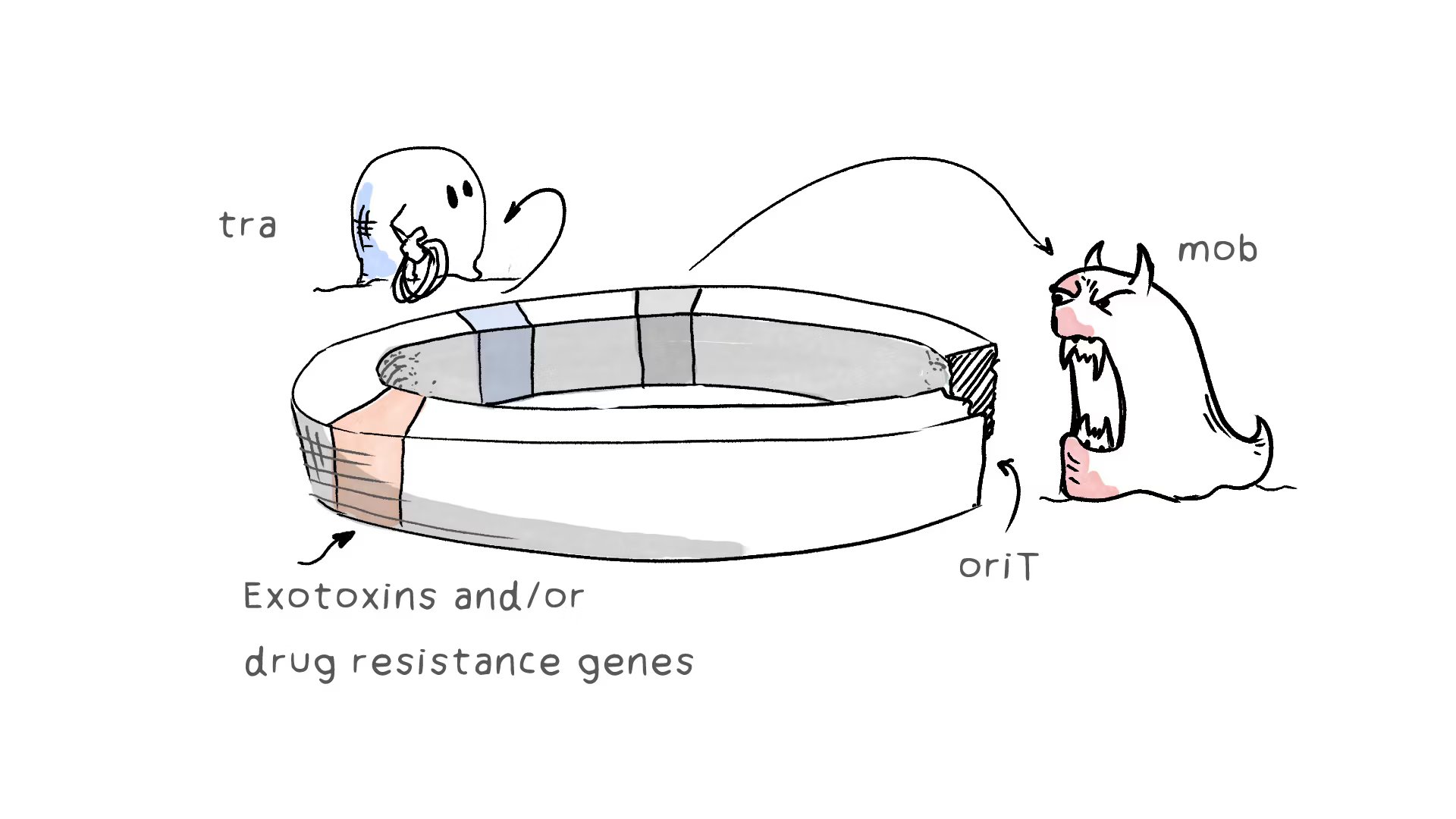
What is an “F” Plasmid? How does it help bacteria to reproduce? And what transformation happens next?
Conjugation is the transfer of a copy of a plasmid from one bacterium to another.
A Plasmid is an extra chromosomal double stranded DNA piece present in a bacterium usually in the form of a circular structure.
A plasmid can replicate without the need for replication of the bacterial chromosome.
A plasmid must contain all the genes which encode the proteins and enzymes that would allow a copy of this plasmid to be transferred from one bacteria to the next. They are called self-replicating plasmids, or conjugative plasmids, or fertility plasmids or simply F Plasmids (F for fertility…of course!)
Many plasmids do not have the ability to self-replicate, although they can replicate along with the bacteria.
This discussion is limited to the F Plasmids.
Watch DrBeen video explaining these points
TC 2:33
Some of the genes that are important for replication:
- TRA or transference gene. This gene encodes a gene that helps in transferring a strand of the DNA from this plasmid to the next bacterium;
- MOB gene- aka mobility gene – mobilizes the plasmid to prepare for the transfer;
- oriT – origin of transfer gene – where the transfer process starts from;
- Genes for producing exotoxins or drug resistance, or some other “value added” property
TC 4.05
Review of a bacterium structure:
- Capsule + cell wall + Plasma membrane. In conjugation, the sex pilus must penetrate all these layers into the cytoplasm containing:
- Nucleoid structure containing the chromosomes;
- Double-stranded plasmids, some of which are self-replicative;
- Ribosomes that pick up a gene’s mRNA and translate it into a protein.
- In addition there are fimbriae and pili, and some bacteria have flagella.
TC 5:56
Donor bacteria come in 3 types depending on the genetic material’s structure and its integration with the bacterial chromosome:
- Male bacterium, or F+
- F prime
- High Frequency recombination cells, or HFR
Any bacterium that doesn’t contain a self-replicating plasmid is called a female (F-). If it contains a self replicating plasmid it is called a male (F+)
In an F Prime bacteria a piece of the chromosome has become incorporated into the plasmid which is then carried with the plasmid to the next bacterium bringing a part of the bacterial DNA with it.
In a high-frequency recombination bacteria (HFR), the chromosome has incorporated a complete self-replicative plasmid into its structure and the whole thing, including the F plasmid, will transfer to the recipient cell.
TC 10:07
How will the plasmid replicate?
- MOB gene starts the process of creating the Mob Protein.
- MOB Protein will cause a break at the oriT;
- TRA protein’s job is to assemble a sex pilus from the bacterium with the F plasmid to the next bacterium, and pull the bacteria closer together to allow the transfer of the plasmid material. In this process the pilus contracts to become a pore between the two cells.
- Now the strands of the F+ plasmids separate, and one strand stays behind in the F+ bacteria and the other travels through the pilus “pore” into the F- bacterium, where it will be recircularized. Now both the bacteria have a single strand of plasmid in them.
- The “Pore” disappears, and enzymes complete the other strand of plasmid, so both now have a self-replicating plasmid.
- The process transformed the F- bacteria into an F+ bacteria.
- It is a similar process for F Prime or HFR plasmids as well, in which they carry the characteristics of that plasmid (i.e.cytotoxicity or drug resistance) and confer them to the recipient bacterium.
And that is how bacteria have sex!
See you at the next lecture!

